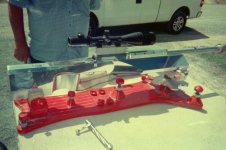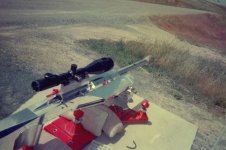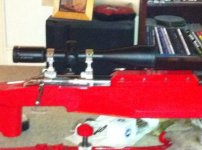Note, all responses are my opinion only...
Is there any advantage to using a longer block?
Yes. I used blocks in the range of 10-12" and preferred that to a shorter block. Imo, 6" blocks on light guns back when that was a rule in pa, were a waste of time.
Im thinking of 8" is there an advantage to say a 10'' block?
The physics of this tend to say a longer block 'could' help. Then, you'll probably be beat by guys with shorter blocks. Who knows. My opinion is, the longer block is a good thing. Just like, hanging on to an axe is easier with two hands than it is with one. Is this measurable on a target? Probably not... I wouldn't sweat it if 8" is the material you have. But if you are doing the work, and 10" or greater is the same money, I'd do it. My best HG has a 14 or 15" block. Was a B**** to make!
I'm planning on doing a glue in, using two pieces, we will bore hole with the two bolted together. How much clearance do I need between barrel and block?
Assuming you bore it resonably straight, I like to use at least .030 per side. I can only guess but some I've taken apart have had on the order of .050 or so. Remember, you have to be able to get the glue in there, so you can't go too tight. You'd be surprised how much pressure it takes to stick the glue in that itty bitty hole.
What type of glue should I use?
Brownells has kits with the glue in double tubes with mixers, and a gun that squeezes it in the block. That's the easiest way to go. Once you have the gun (like a caulking gun), all you need is the glue gizmo and you're ready for a block job.
How do I keep barrel centered in block?
O-Rings at each end.
How do I pump glue into block?
Again, Brownells has the caulking gun gizmos in a kit.
I know its hard to get answers on HG questions, any info will be appreciated.
Getting answers for HG's is no trouble at all. Getting answers that agree with one another is what is difficult!





